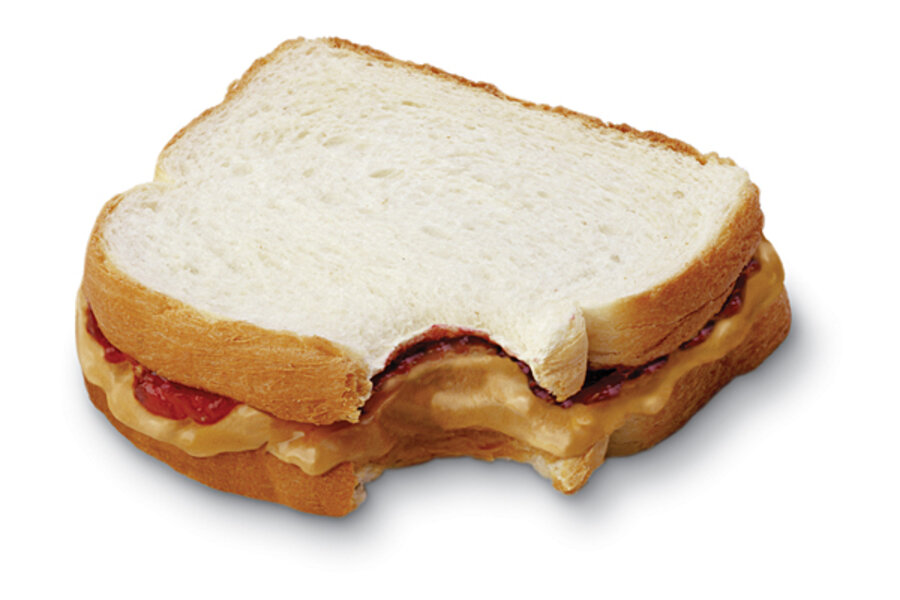Does brown-bagging your lunch really save money?
I was fascinated by this recent discussion at Lifehacker about whether brown-bagging your lunch is really much of a money saver. There were enough good points made on both sides that it really made me question whether or not brown-bagging really is a money saver.
After thinking through the question and running the numbers on quite a few different scenarios, I’ve concluded that, yes, brown bagging can save you money consistently if you do it right.
Let’s walk through the discussion step-by-step.
First of all, brown bag lunches aren’t free. No matter what, when you consume food, it has a cost. The entire argument for brown-bagging your lunch isn’t that it’s free, but that the cost is lower than buying your lunch at a restuarant.
So, to establish whether a brown bag lunch is cheaper, you have to compare the cost of that meal to the cost of eating other lunch options.
If you’re brown-bagging it and bringing something from home to eat, it usually falls into one of three categories.
You’re bringing leftovers. You’ve bagged up a portion of your meal from last night and bringing that to work. In this case, the cost of your meal is the total cost of last night’s dinner divided by the number of meals you got out of it. So, if last night’s dinner covered dinner for your four family members plus your lunch today, then you divide the total cost by five to get the cost of your leftover lunch.
You’re bringing a prepared meal. You picked up a bagged salad or a frozen meal and now you’re bringing it to work. The cost of this is obvious.
You’re bringing a meal you made from scratch. You made some sandwiches or a simple dish at home that you’re now bringing to work. Again, the cost of this is easy to calculate.
The cost here varies a lot. If you’re bringing some leftover bean soup and cornbread from home, you’re likely spending far less than $1 for your meal. If you’re bringing in half of your meal from a restaurant the night before, the cost might easily be $8-10.
The cost of your brown bag lunch is very much determined by the food choices you make.
Of course, at the same time, the cost of eating out for lunch is very much determined by the food choices you make. If your lunch consists of a single cheeseburger off of the “dollar menu” at a local fast food restaurant along with a cup of water, you might be spending as little as $1 for lunch. On the other hand, if you’re going out to lunch at a higher-end restaurant, you can easily be dropping $20 at your lunch meal.
Given these things, you can easily create cases where it’s far cheaper to eat out than it is to brown bag it. If you’re comparing a well-prepared homemade meal to a value menu cheeseburger and a cup of water, the value menu cheeseburger is going to be cheaper.
What you’re really looking for is the average, and the only way to figure that out is to look at your actual habits.
What do you actually spend when you eat out for lunch? What is the cost of that meal when you brown bag it?
Over and over again, I’ve compared my own eating habits and it’s not even close. Brown bagging isdrastically cheaper than eating out.
As I’ve mentioned before, I eat out a couple times a week with professional associates and friends. The rest of the time, I eat leftovers or simple meals at home. On rare occasions, I’ll grab a convenient meal when I’m away from home.
Upon reading those comments, I sat down to calculate my averages for the past week. I had to make some assumptions as to the overall cost of some of my homemade dishes, but I found receipts for every meal I ate out for lunch.
The average cost of brown bagging it (eating lunch without going out) was $2.45, as near as I could calculate. The average cost of eating out was $8.80.
Why did it wind up that way? To put it simply, virtually everything I eat at home is far less expensive than the cost of similar quality food at restaurants.
Why? Restaurants have overhead, of course. They have staff to pay and profit to earn and that’s added onto your bill.
Naturally, I could have eaten out for less, but I wouldn’t have been satisfied with my meals. I could have spent more on the brown bags as well, but again, I spent as much as would produce a satisfying lunch.
It’s all about the individual choices you make and brown bagging your lunch simply opens the door to a lot of options that are less expensive than eating out.
That’s why brown bagging will always be a great choice for frugal-minded people: there are more cheap options with brown bagging that meet your other lunch needs (flavor, health, etc.).
The post Does Brown-Bagging Your Lunch Really Save You Money? appeared first on The Simple Dollar.







